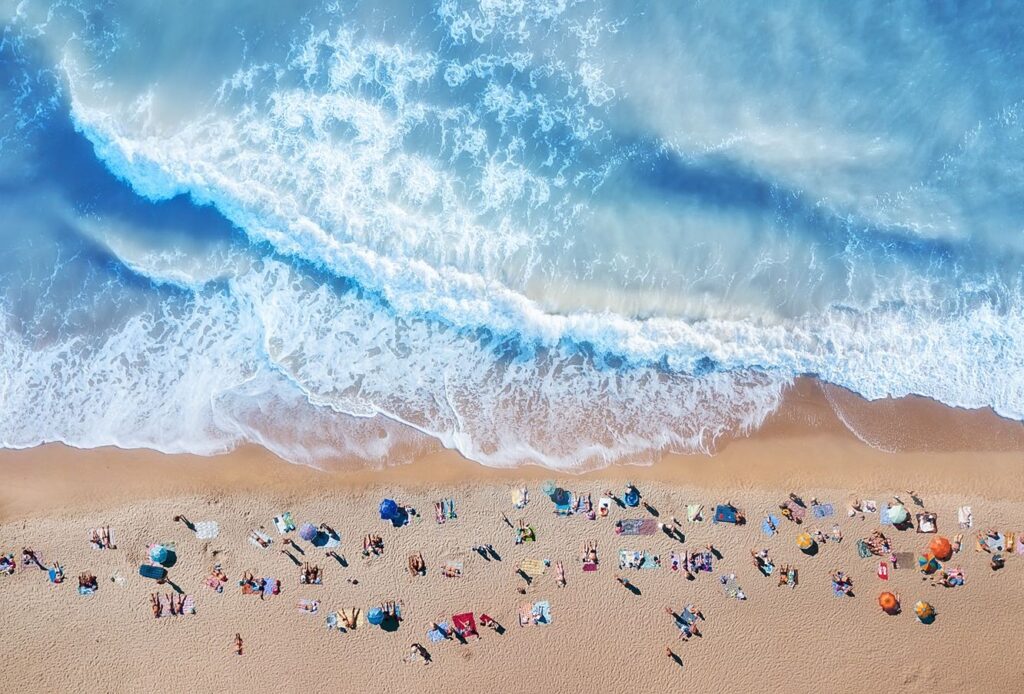Beyond beaches and waves, summer vacation in Destin is where sky-high adventures begin. Visiting Destin, FL, guests will be surrounded by numerous options for aerial water sports activities such as parasailing, flyboarding, and even gliding through the water surface with jetpacks. Each water sports activity brings its own kind of thrill; flyboarding and jetpacking boast a thrilling feeling for participants. While parasailing in Destin, FL offers visitors an opportunity to enjoy stunning sights, thrills, and calmness all at the same time. Wonder what makes these aerial water sports distinguished from each other and give a different sense of thrill. Walk with us through the fascinating science behind aerial watersports to understand the physics that creates the thrill of these activities.

The Physics of Flight and Lift Generation
Anyone can see that most if not all aerial water sports rely on a flight and lift motion, the question is how does this motion actually work in real life to the extent that it can lift people. Let’s dive deep into the fundamental principles of aerodynamics and Newton’s Laws of Motion.
The main generation behind parasailing is lifting. The motion of lifting happens when air flows over the parasail wing, creating a pressure difference of lower pressure above the wing and higher pressure underneath the wing. With the upward force under the wing greater than the pressure above the wing, creating a force counteracts gratuity allowing the initial lift of parasailing. The parasail wing, unique shape of a curved, rectangular airfoil, is specially designed to maximize lift, making it possible for two people to soar effortlessly using only the power of airflow. It is the lift motion that makes it the most popular and easiest aerial water sport activity that can be enjoyed by people of all ages.
But for these activities to be safe for participants of most ages to enjoy, stability and control play a main role. Imagine how terrifying it would be to fly aimlessly into the sky without anything to keep you from returning to the ground. Parasailing relies on harness alignment and rope tension for stability. Flyboards and jetpacks use body positioning and nozzle direction to control pitch (forward/back), yaw (rotation), and roll (side tilts).
How wind and water conditions affect aerial activities
While aerial watersports have much to do with the creativity of the human mind, environmental factors play a crucial role in both performance and safety.
For the initial lift of parasailing, an optimal win speed is needed; this speed usually ranges from 12 to 27 mph. If the towing boat isn’t going fast enough to give the initial wind speed, there will be little wind to lift up the parasail wing and passengers on it. However, too much wind would cause a dangerous lift. Especially in the case of crosswinds or strong gusts can destabilize flight and even swing the parasail wing unpredictably.
Water conditions have much more to determine the experience of flyboarding and jetpacking than they are for parasailing. Flyboarding is an activity that relies on water to operate. Calm water and not too shallow areas are the best for flyboarding as calm waters provide stability and safe maneuvering. So is jetpacking which can be difficult to control when the conditions of water are choppy or unstable, increasing impact risk during falls. For beginners that started flyboarding or jetpacking, wave heights are another thing you need to look out for. Strong and high waves affect the stability of the water surface, ultimately making it more difficult for beginners to maneuver. It is required for participants of all levels to be aware of tide and currents conditions, as strong currents may strain towlines or complicate rescue in emergency situations.

Safety engineering in modern aerial equipment
Aerial watersports might be a young activity compared to other beach front activities, but they have come a long way in improving the effectiveness and safety for equipment.
Modern aerial water sport gear integrates advanced mechanical design and fail-safes to ensure the best experience and safety for participants.
For example, each piece of parasailing equipment is designed and made with materials that suit the concept of the activity. Parasailing towline materials are often braided polyethylene to provide lightweight, high tensile strength, and UV resistance. Fail-safes such as quick-release harnesses and carabiners allow participants to disconnect quickly from the parasail wing in emergency situations.
Flyboards and jetpacks operate with more modern technology, most of the equipment for these two activities have kill switches to cut power instantly if the rider falls. These equipment also include pressure relief valves to prevent over thrust.
Gears that are mandatory for flyboarding jetpacking are helmet and buoyancy, these are always required for most operators.
Beyond gears and fail-safes technology, certification and inspections of operators are a part of keeping the experience with aerial water sports to the fullest. Operators ought to provide equipment that must meet U.S. Coast Guard (USCG) or ASTM standards. Inspection procedures including routine safety checks and pressure testing are performed daily and before use.
Evolution of aerial water sport technology
1970s–1980s: The Birth of Parasailing
The origin of parasailing traces back to the 1970s, when it was initially invented for military training by a French engineer, Pierre-Marcel Lemoigne. He is often credited with inventing the ascending parachute in the 1960s, which became the inspiration for parasailing. In the 1960s, parasailing evolved from parachuting, paragliding, and became one of the most popular water sports.
First recreational use of parasailing took place in the early 1970s in which operators began to tow people behind boats with parachute-style canopies and the sport quickly gained popularity in coastal tourist towns. By the 1980s, parasailing had become a regulated tourist activity. Companies began producing purpose-built parasailing boats with winch systems, improved canopies, and safety harnesses.
1990s – Present Day: Parasailing’s Rise
Since the 1990s, aerial water sports have evolved rapidly until the present day. In the 90s, parasailing popularized with better canopy designs and stronger synthetic lines. In 2012, The Flyboard (invented by Franky Zapata) introduced vertical water flight, pushing the limits of sport and stunt performance. Today, the use of carbon fiber, aluminum alloys, and composite polymers for lighter, stronger gear. Wireless remote control systems allow instructors to manage power flow on flyboards. Wearable tech (e.g. telemetry vests) is being tested to monitor performance and safety in real time.

FAQ
What do parasailing prices in Destin look like?
Typical pricing for parasailing range from $55 to $80 per person, depending on season, company, and extra services that come with the flight. Most operators offer early bird options as the budget friendly choice, this is at a discount rate from $45 to $55 per person. Some more tips for a good price are to look for combo deals and check inclusions.
Where are some attractions to spot out during my flight?
If you are a first timer, it is inevitable that you might be wondering what stunning sights to expect or to look out for from above. While soaring high above, look for the Emerald Coastline, Crab Island, Destin Harbor and East Pass. Last but not least, don’t miss out on spotting marine life in their natural habitat.
How do I take good pictures while parasailing?
A GoPro camera is highly recommended for the best picture outcomes, capturing every moment as vibrant as it is. If you are using your phone, make sure it is secured before the flight. You can take a few pictures prior to flying to test which angle is the best to your taste. Furthermore, you can start recording before taking off and try a few panoramic shots once you’re in the air. Adjusting lighting and picture taking modes prior flight is another recommendable tip.

